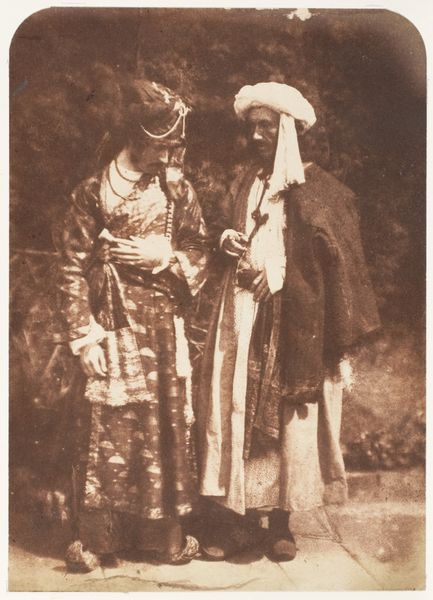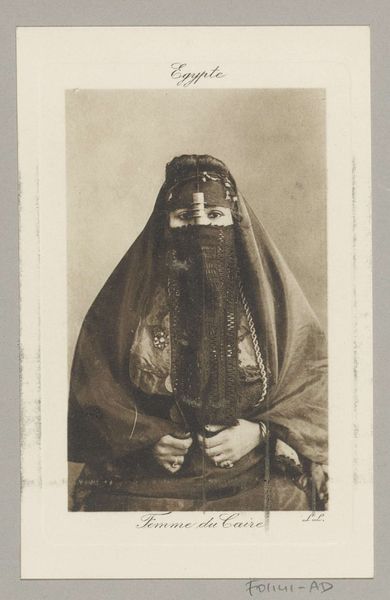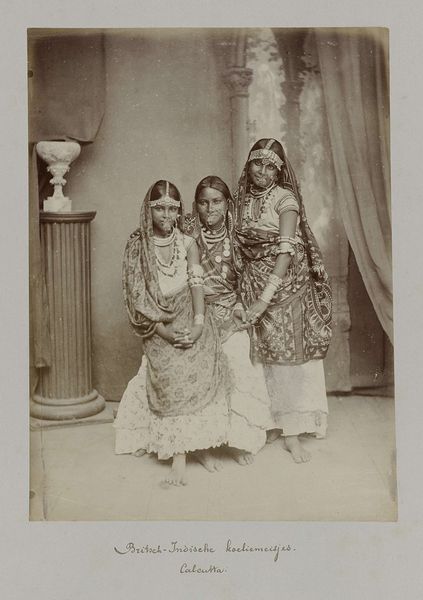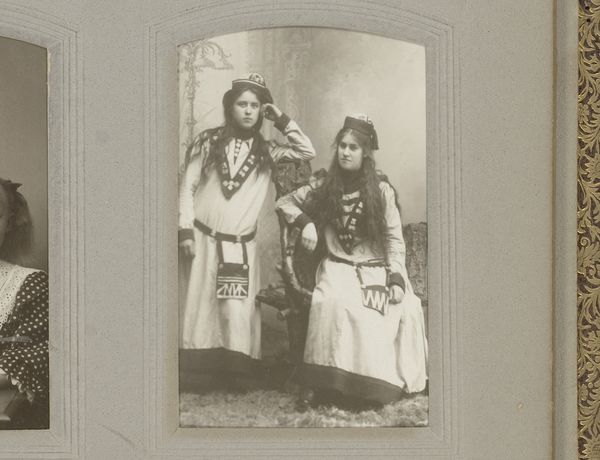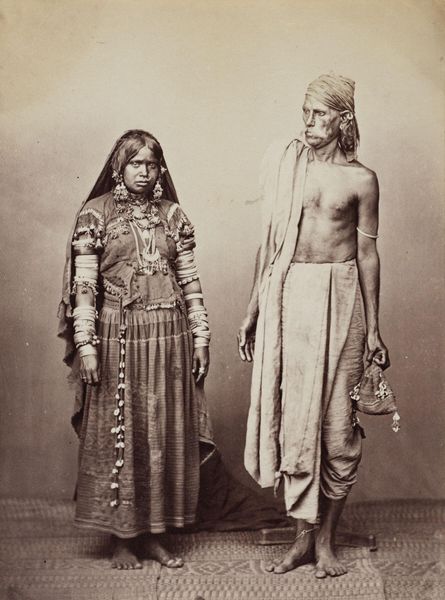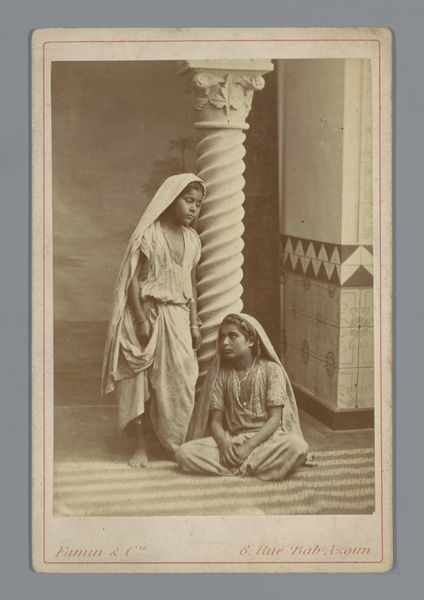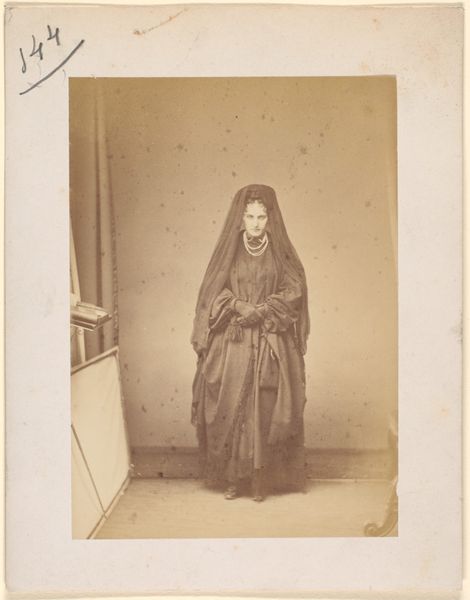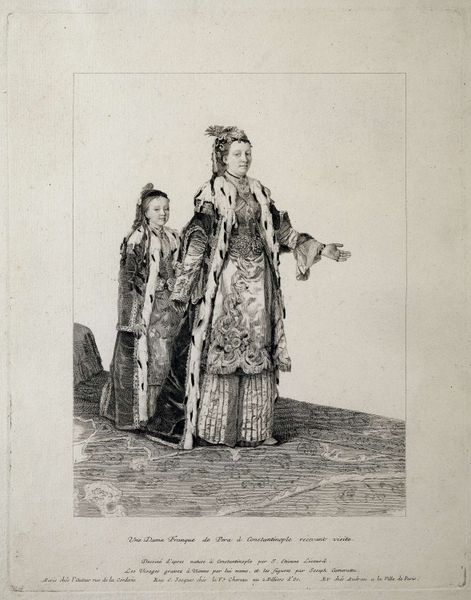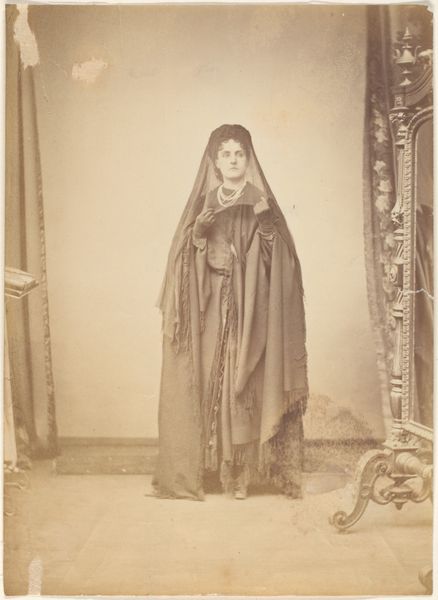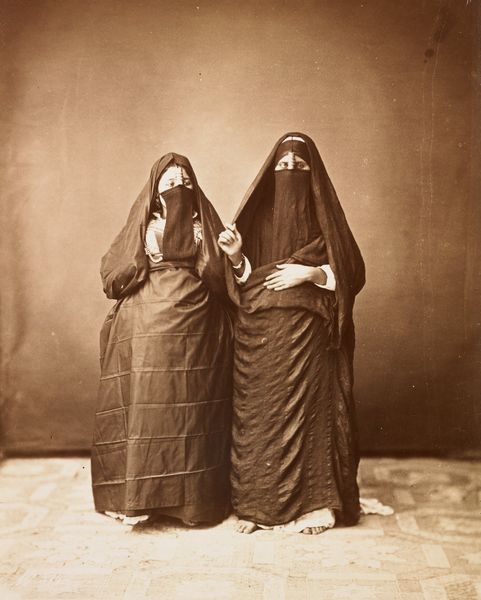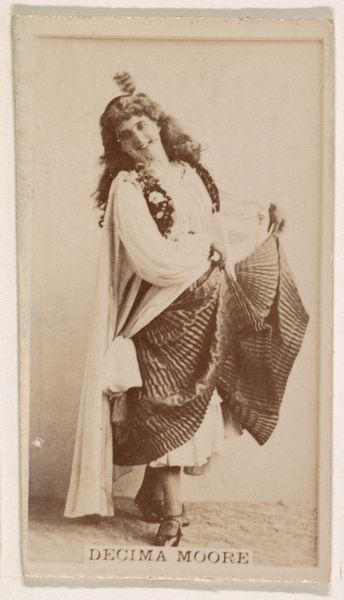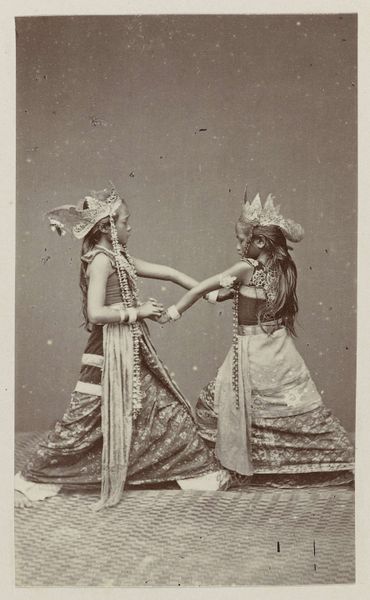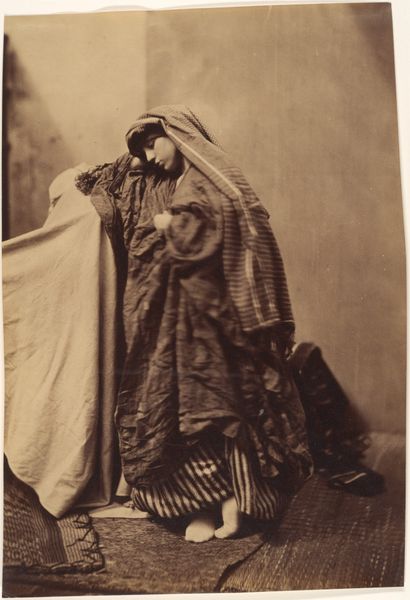
Portret van twee onbekende Syrische vrouwen, gesluierd c. 1867 - 1877
0:00
0:00
photography, gelatin-silver-print
#
portrait
#
photography
#
group-portraits
#
orientalism
#
gelatin-silver-print
#
19th century
#
portrait drawing
#
islamic-art
Dimensions: height 268 mm, width 218 mm, height 559 mm, width 470 mm
Copyright: Rijks Museum: Open Domain
Editor: Here we have Féliz Bonfils’ “Portret van twee onbekende Syrische vrouwen, gesluierd,” a gelatin silver print dating from around 1867 to 1877. It's quite striking, these two figures shrouded in patterned cloth. There's a formality, yet also a mystery. What are your initial thoughts when you look at this photograph? Curator: The covering itself speaks volumes. We are encountering potent visual cues tied to both religious identity and gender roles in the 19th-century Middle East. Consider the gaze it denies us, replaced by intricate patterns. The fabric becomes a text, conveying status, perhaps origin, while simultaneously obscuring individual identity. What cultural narratives do you think this image engages with? Editor: I hadn't really considered the fabrics as telling a story of their own, almost like a stand-in for the women themselves. Perhaps this plays into Western ideas about the "Orient" at that time? Curator: Precisely. Think about Orientalism, the West's fascination with, and often misrepresentation of, the East. The veil was frequently used as a symbol to exoticize and often sexualize the women of these cultures, paradoxically, by concealing them. However, for these women, the veils would be part of daily life, signaling social standing, propriety, belonging, as much as they may denote faith. What do you make of the backdrop? Editor: It seems deliberately posed, almost theatrical. Like they are presenting themselves, or at least how they wish to be seen, but perhaps in line with what was expected. Curator: An interesting observation. And how much is dictated by the photographer's framing, their agenda, their position as a Westerner capturing a moment, or constructing one? It reminds us how every image is both a reflection and a refraction. Editor: It's really fascinating to consider all those layers – the cultural context, the photographer's perspective, the subjects' identities, all interacting. Curator: Indeed. This photograph encapsulates how a seemingly simple portrait can become a powerful site for interpreting identity, representation, and the complex exchange between cultures.
Comments
No comments
Be the first to comment and join the conversation on the ultimate creative platform.
